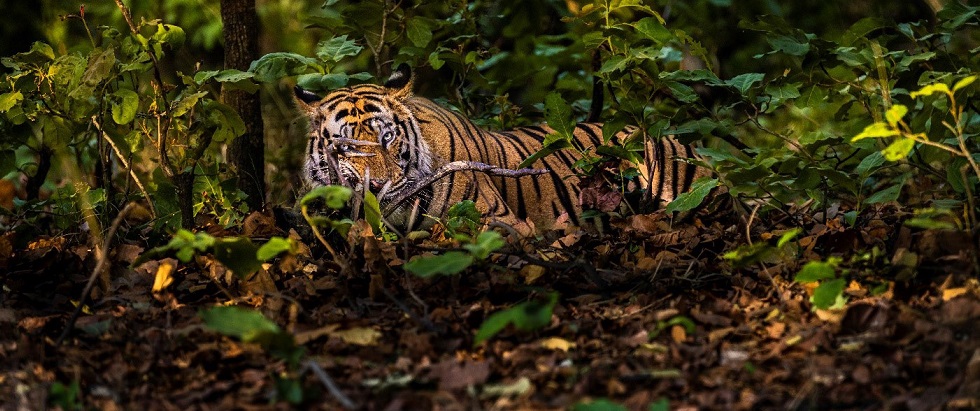Bandhavgarh National Park, located in Madhya Pradesh, India, beckons visitors with the allure of two distinct dimensions of tourism: wildlife and heritage. Renowned as India's premier habitat for tigers, this park boasts the highest density of Royal Bengal tigers, and it is the ancestral home of all white tigers worldwide. Steeped in history dating back 2000 years, Bandhavgarh is not only a wildlife sanctuary but also a testament to ancient civilizations. Amidst its lush expanse, man-made caves adorned with inscriptions and rock paintings echo tales of times gone by. Once a hunting ground for maharajas, this territory has transformed into Bandhavgarh National Park, a sanctuary for the majestic Royal Bengal Tiger, as well as a haven for diverse mammal and bird species.
Meet the heritage dimension of Bandhavgarh - Bandhavgarh Fort
Delve into the heritage dimension of Bandhavgarh by embarking on a trek to the Bandhavgarh Fort, an integral part of the park's historical tapestry. While motorable roads once led to the fort atop a hill, today's explorers must traverse the path on foot. This journey is more than a trek; it is a pilgrimage to a site steeped in both spirituality and history. As visitors ascend, the Bandhavgarh Fort reveals itself, now in ruins but still echoing tales of ancient times. Atop the hill rests the Bandhavdeesh Temple, dedicated to Lord Lakshman, the younger brother of Lord Rama. Local festivities draw devotees to this sacred site, adding a cultural dimension to the historical experience.
Venture cautiously along the path, as it is frequented by the park's regal residents, the tigers. Tiger pug marks serve as a testament to their presence. The climb takes about an hour, yet the journey is punctuated by 10th-century rock images depicting Vishnu's incarnations. Marvel at a 22-foot statue of Narasimha, the boar incarnation of Barah Bhagwan, and other divine forms, seamlessly integrated into the natural jungle surroundings.
Bandhavgarh Fort stands as a masterpiece from the "Treta Yuga," an era in Hinduism preceding Christ, discovered through archaeological surveys. Uncovering the layers of history, the region reveals the dominance of dynasties such as the Sengars, the Kalachuris, and the Baghels, with the latter ruling for an extended period. This historical treasure trove is intertwined with the legends of Ramayana. The name Bandhavgarh itself, a fusion of "Bandhav" (brother) and "Garh" (fort), resonates with the tale of Lord Rama gifting the fort to his brother Lakshman. Fables recount monkeys reconstructing the fort, creating a bridge between Lanka and the mainland.
The Best time to visit Bandhavgarh is during the winter season, from October to March. To embark on this historical journey, prospective visitors must secure prior permission from the Divisional Forest Office in Umaria, 32 km from Bandhavgarh. Conveniently accessible by railway route from Delhi, with Jabalpur being the nearest airport, Bandhavgarh is not just a historical marvel but also offers various resorts in enticing packages.
In essence, Bandhavgarh National Park beckons not only with the thrilling prospect of encountering wildlife but also with the rich tapestry of history woven into its ancient landscapes. A visit to this sanctuary is a journey through time, where each step unveils the tales of dynasties, myths, and the enduring legacy of the Royal Bengal Tiger.

